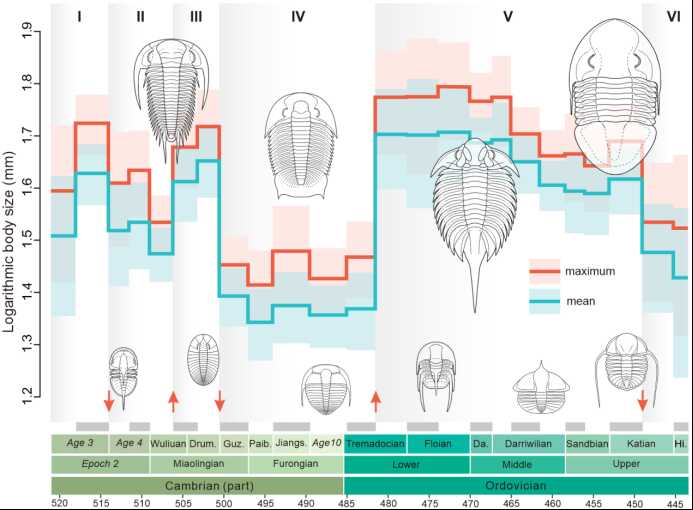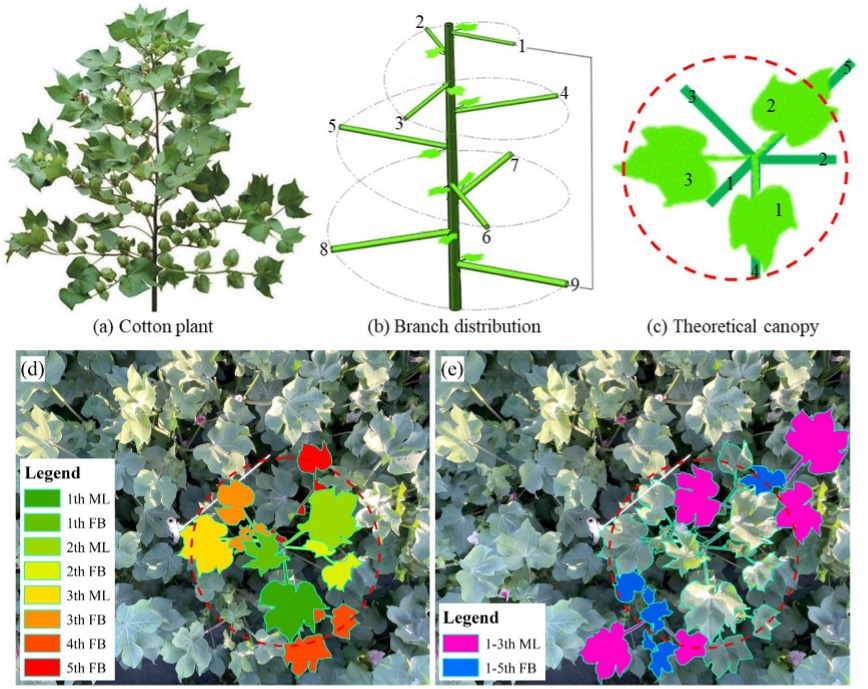2025-05-06 中国科学院(CAS)

Fig.1: Tempo and mode in the body size evolution of Cambrian-Ordovician trilobites. Changes in maximum size (red) and mean size (blue) for each time slice, with lines and shading representing the mean value and 95% confidence intervals. Discrete episodes of body size change are marked by red arrows, and these events demarcate six distinct phases. (Image by Prof. ZHAO Fangchen’s group)
<関連情報>
- https://english.cas.cn/newsroom/research_news/earth/202504/t20250428_1042289.shtml
- https://www.science.org/doi/10.1126/sciadv.adt7572
古生代初期三葉虫の周期的な体長変化と海洋の酸化還元変化 Episodic body size variations of early Paleozoic trilobites associated with marine redox changes
Zhixin Sun, Fangchen Zhao, Han Zeng, Douglas H. Erwin, and Maoyan Zhu
Science Advances Published:2 May 2025
DOI:https://doi.org/10.1126/sciadv.adt7572
Abstract
Body size greatly affects how organisms interact with their environments. However, the macroevolutionary patterns of body size across many major metazoan clades and their constraining mechanisms remain elusive. A new high-resolution body size dataset covering 2435 species from 1091 genera of Cambrian and Ordovician trilobites reveals that body size evolution changes episodically, with three marked reductions in size. Such a pattern rules out a persistent Cope’s rule dynamic. Rather, we find a strong temporal link between body size changes and major fluctuations in marine redox, supporting the hypothesis that marine oxygen levels exerted a primary control on the tempo and mode of trilobite body size evolution. These further imply a dominant role for marine oxygen in early animal evolution.



